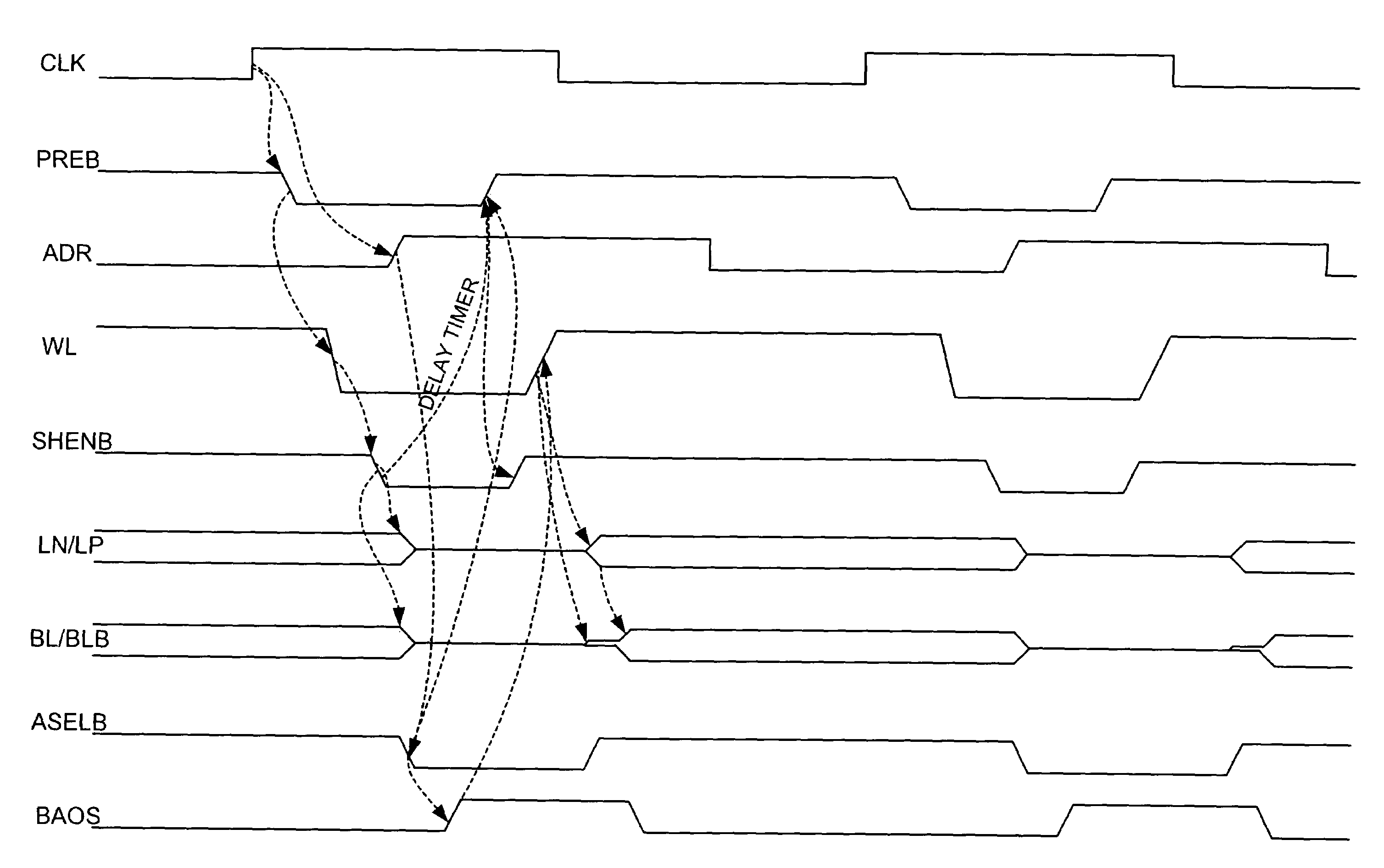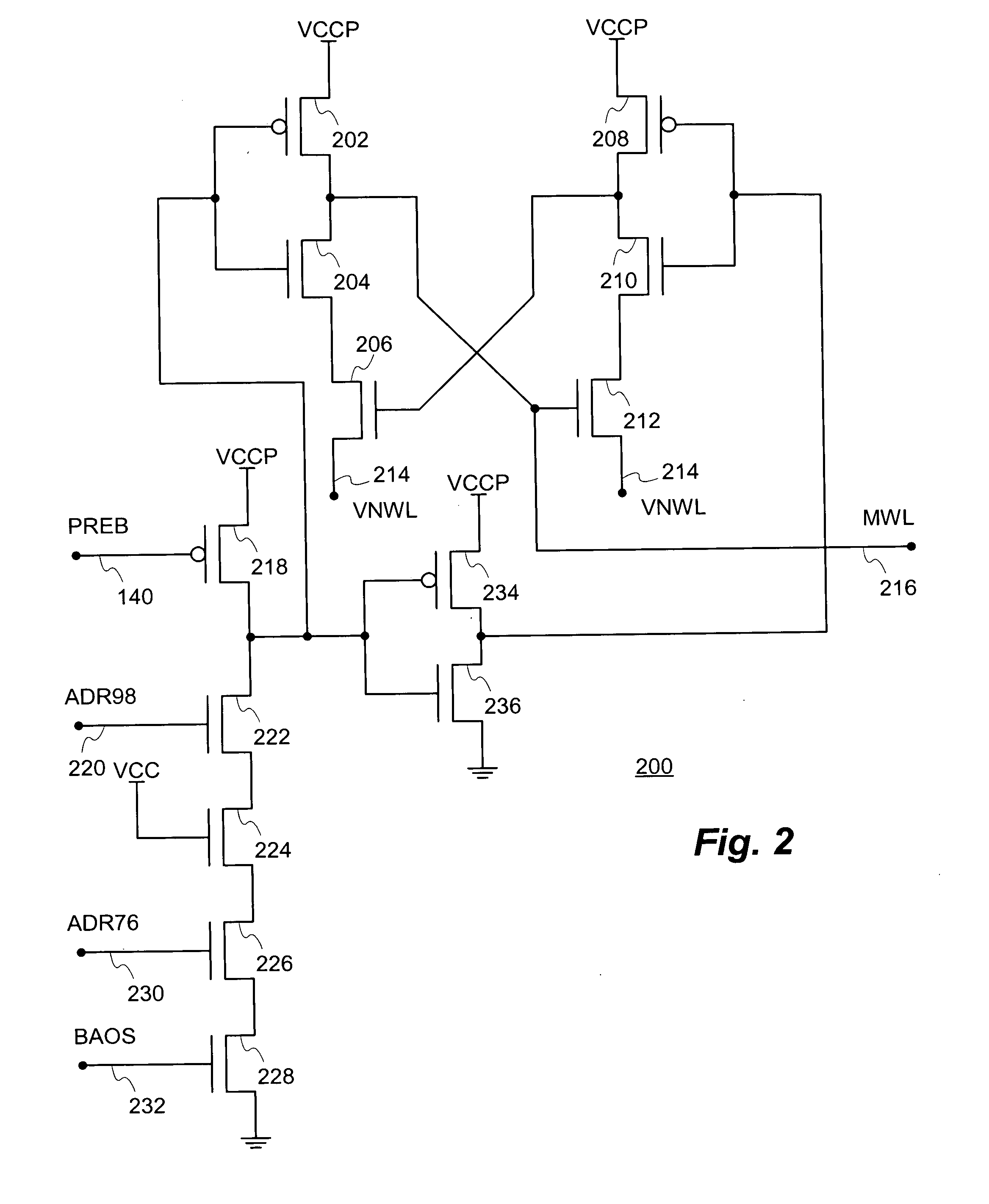Clock signal initiated precharge technique for active memory subarrays in dynamic random access memory (DRAM) devices and other integrated circuit devices incorporating embedded DRAM
a technology of dynamic random access memory and precharge technique, which is applied in the direction of information storage, static storage, digital storage, etc., can solve the problems of discharging leakage power and down memory access, and achieve the effect of reducing the clock period and improving logi
- Summary
- Abstract
- Description
- Claims
- Application Information
AI Technical Summary
Benefits of technology
Problems solved by technology
Method used
Image
Examples
Embodiment Construction
[0016]With reference now to FIG. 1, a schematic diagram of an exemplary main precharge clock (precharge clock 0 bar [POB]) generator 100 is shown for possible use in the implementation of the clock signal initiated precharge technique for active memory subarrays of the present invention. The POB generator 100 comprises series connected P-channel transistors 102 and 104 further in series with N-channel transistors 106, 108 and 110 coupled between a boosted supply voltage source (VCCP) and a reference voltage level of circuit ground. Similarly, series connected P-channel transistors 112 and 114 are connected in series with N-channel transistors 116 and 118 between VCCP and circuit ground.
[0017]An input clock (CLK) signal on line 120 is applied to the gate terminal of P-channel transistor 122, which is connected in parallel with transistor 104, as well as to the gate terminal of transistor 110. An array select bar (ASELB) signal is supplied on line 124 which is coupled to the common co...
PUM
 Login to View More
Login to View More Abstract
Description
Claims
Application Information
 Login to View More
Login to View More - R&D
- Intellectual Property
- Life Sciences
- Materials
- Tech Scout
- Unparalleled Data Quality
- Higher Quality Content
- 60% Fewer Hallucinations
Browse by: Latest US Patents, China's latest patents, Technical Efficacy Thesaurus, Application Domain, Technology Topic, Popular Technical Reports.
© 2025 PatSnap. All rights reserved.Legal|Privacy policy|Modern Slavery Act Transparency Statement|Sitemap|About US| Contact US: help@patsnap.com



